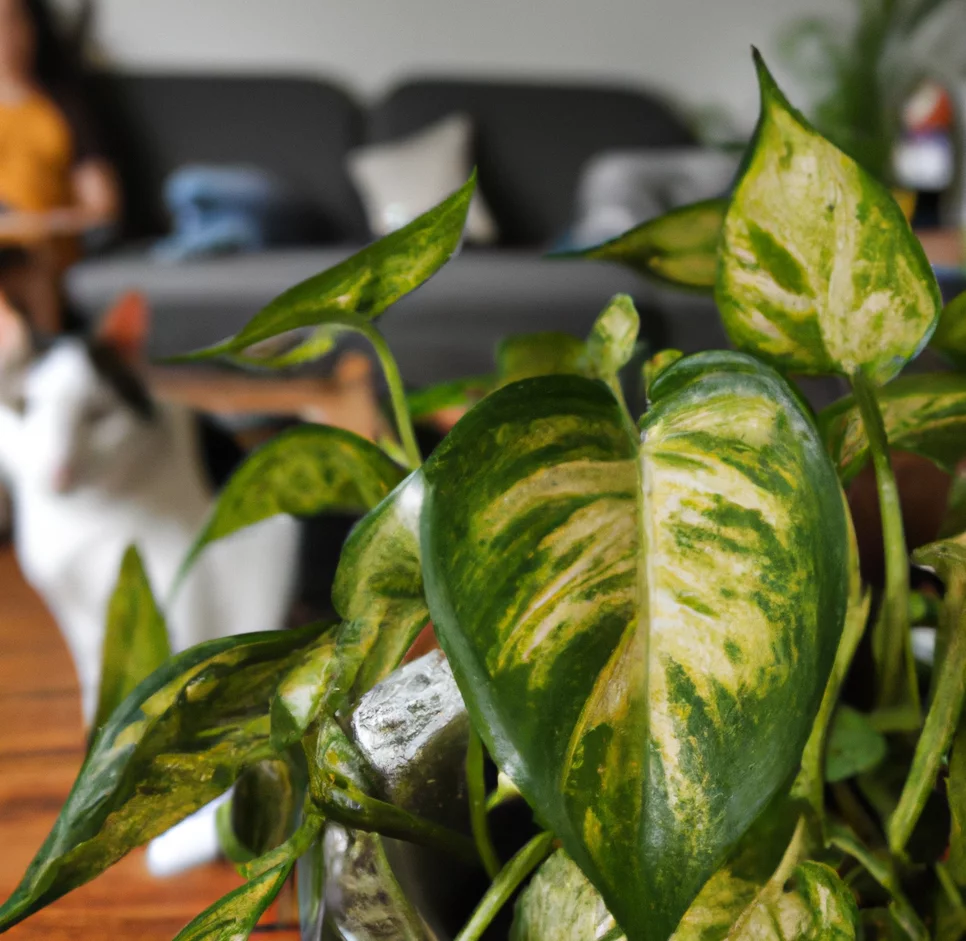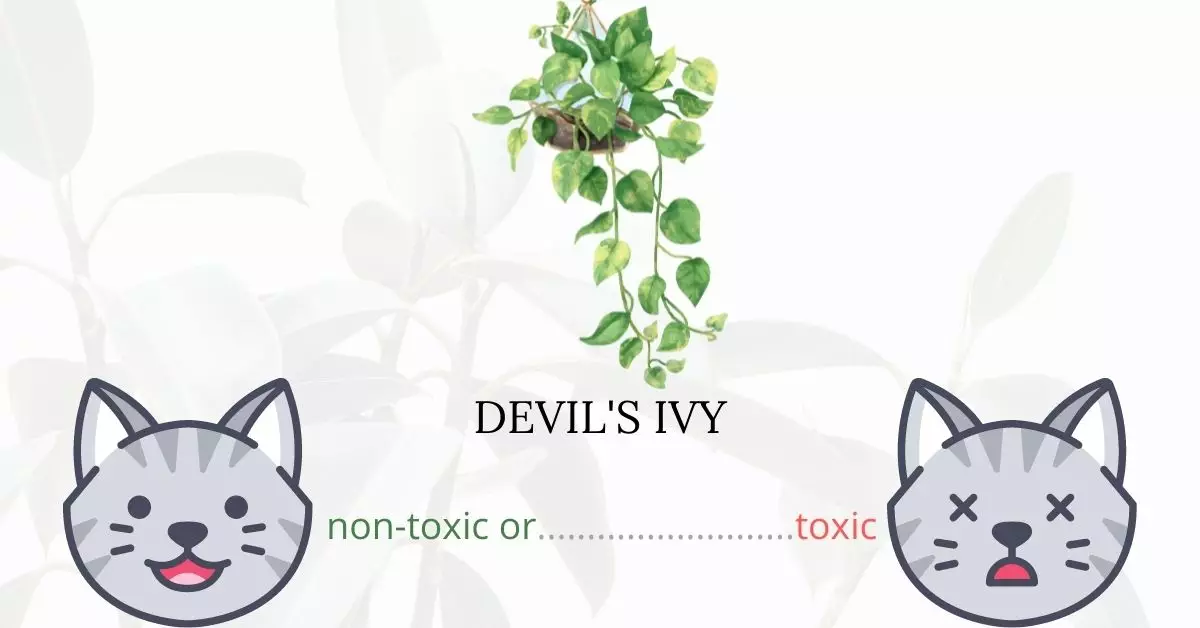Yes, Devil’s Ivy, also commonly referred to as Golden Pothos, Taro Vine, Ivy Arum, and Hunter’s Robe, is toxic to cats. Collaborating closely with a team of experienced DVMs (doctors of veterinary medicine), we ensure the accuracy and timeliness of the information provided here regarding the potential risks of various plants, specifically Devil’s Ivy, and their effects on cats. Additionally, our research is enriched by data sourced from high-authority websites like ASPCA and PetMD.
The plant contains insoluble calcium oxalates. When a cat chews on the plant, these crystals are released, leading to immediate discomfort and pain in the feline’s mouth. While the onset of symptoms can be rapid, making it rare for cats to consume a large quantity, it’s essential to note that any poisoning in cats should be addressed promptly. If you have cats at home, it is advised to avoid keeping this plant or place it out of their reach.
Clinical Signs of Devils’ Ivy or Golden Pothos Poisoning in Cats

When a cat comes into contact with, smells, or consumes the Devils’ Ivy plant, it is exposed to the plant’s toxic components. The main culprit for the clinical signs observed in cats is the insoluble calcium oxalates contained in the plant. These microcrystals can have a series of effects:
- Drooling: The immediate irritation and pain caused by the calcium oxalate crystals can result in excessive salivation or drooling, as the cat’s body tries to cleanse and soothe the affected area.
- Intense Oral Pain: When these crystals are released as the cat chews on the plant, they pierce the sensitive oral mucosa, leading to severe discomfort.
- Loss of Appetite: The oral pain can discourage the cat from eating, leading to a decreased appetite.
- Pawing at the Mouth: This behavior indicates the cat is experiencing distress and is trying to remove or soothe the irritant in its mouth.
- Vomiting: If ingested, the irritation can extend to the cat’s stomach, leading to nausea and eventually vomiting.
- Edema or Swelling of the Mouth, Tongue, and Lips: The tissue damage and irritation caused by the crystals can result in localized swelling as the body’s inflammatory response activates.
- Swallowing Difficulties: The swelling and pain can make it challenging for the cat to swallow, leading to this symptom.
It’s crucial to recognize these signs early and seek veterinary care, as prompt attention can help alleviate the cat’s discomfort and prevent further complications.
First Aid and Treatment of Devil’s Ivy or Golden Pothos Poisoning in Cats

Remove any residual plant debris from the mouth and flush with milk, canned tuna, or chicken broth as a first-aid measure. For continued advise, contact your veterinarian or a pet poison hotline; you may be requested to keep an eye on the cat or bring it in for treatment. Treatment may include giving intravenous fluid and administering medications to your cat such as antihistamine, and activated charcoal among others.
Recovery from Devil’s Ivy or Golden Pothos Poisoning in Cats

As long as the poisoning is discovered and treated immediately, most cats with mild cases of ivy arum poisoning recover within twenty-four hours. For more severe cases of poisoning, the prognosis and recovery time may be different. Allow plenty of time for your cat to rest while he or she is still regaining strength.
Prevention of Devil’s Ivy or Golden Pothos Poisoning in Cats
If your cat was poisoned by devil’s ivy while outside, it is a good idea to limit your cat’s outside activities to avoid future poisonings. If the devil’s ivy is a home or garden plant, you should remove it to avoid poisoning. Always do your homework on any plants you want to buy to be sure they do not contain any dangerous compounds for your cat.
If you love plants but have cats at home, check out these lists:





